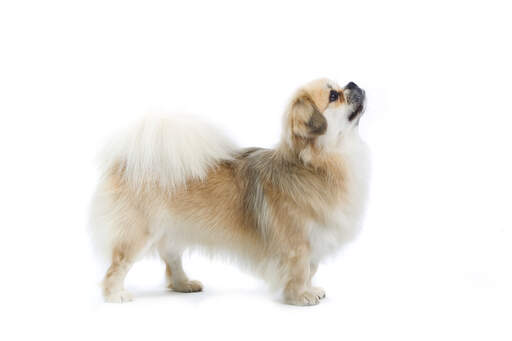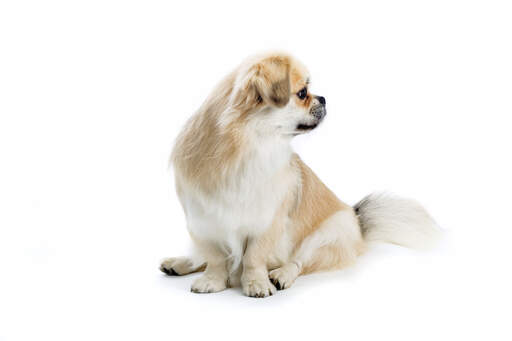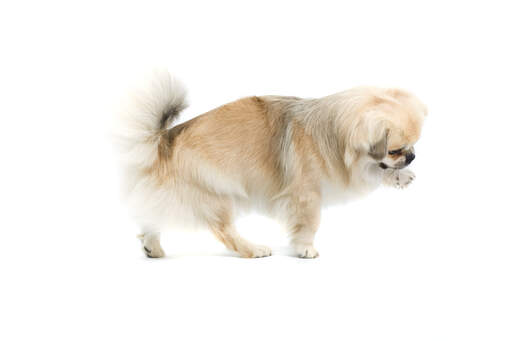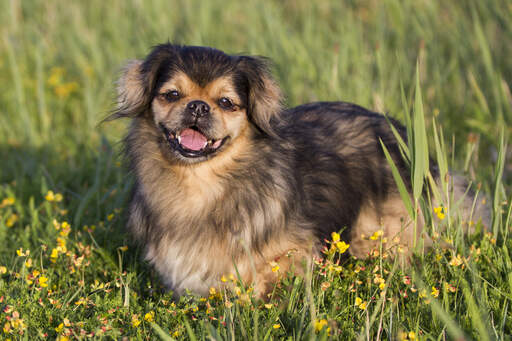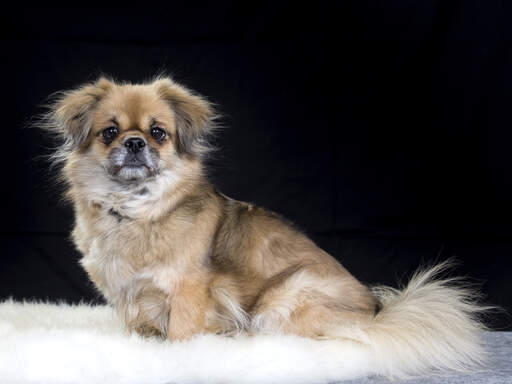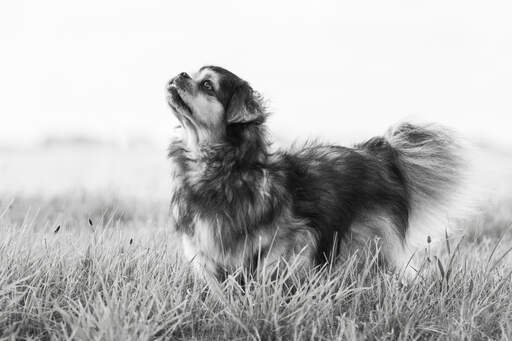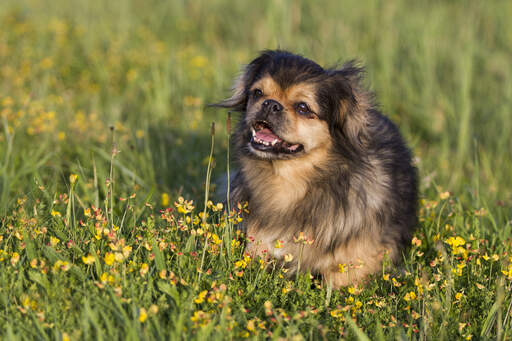Tibet-Spaniel










Geschichte
The Tibetan Spaniel dates back thousands of years to Asia. The bred was kept by Monks as companions and to sound the alarm if strangers or wolves approached the Monastery. The Monks believed the dogs resembled a lion, a strong Buddhist belief and were classed as guardians of the Temples. The breeding took place in the Monasteries, where only the smallest dogs were selected. The first concentrated breeding programme outside of Asia took place in the 1940's when a few came to Britain. They are still quite rare dogs.
Verhalten
The Tibetan Spaniel is a happy, friendly little dog who excels at being a watch dog. They like to be high up (on the back on the sofa) to get a good view of what's going on around then, so they can raise the alarm. They are loving towards their family and like nothing better than a cuddle on the sofa and sleep the day away. They are good with children within the home, other pets and dogs, but are naturally reserved with strangers, although rarely aggressive. They are not prone to being yappy, but will bark when they feel there is a need. They are classed as lap dogs and will want to be close to you as much as possible. Sleeping on your lap, next to you and on your bed are simply the way it has to be with this breed. They can suffer separation anxiety if not accustomed to being left for short periods and are really best suited to someone who is around for most of the day. Barking and destructive behaviour is a common problem with the breed if they get bored. Tibetan Spaniels are intelligent and bold. Training can take time as they are also stubborn. Their desire to please you is overruled by their stubborn ways. They need kind, consistent training and are very sensitive to harsh words and treatment. They say that Tibbies can pick up on moods and will try and cheer you up if you are feeling down. They dislike arguments within the home and will often retreat if people are shouting. Recall can be a problem, so best walked in a safe area or on a lead. Affectionate play is one way to get them to learn. They need little exercise, but a daily walk and a boisterous play time should suit these active dogs. They are very clean dogs and rarely get dirty as they seem to want to be clean.
Their coat requires brushing a few times a week, but they don't really suffer from doggy odour. Bathing is usually minimal. They suffer little in the form of ailments, but Patellar Luxation and cataract are sometimes seen.
Charakter
Tibetan Spaniels have a lively and sensitive temperament. They will become very attached to their family who they will love to play with and get attention from. However they will usually show a sharpness to strangers if not avoid them all together. For this reason it is important to socialise them early. Interestingly the Tibetan Spaniel is much happier to meet new dogs.
Gesundheitliche Probleme
Health problems that may affect Tibetan Spaniels include progressive retinal atrophy (PRA: degeneration of the retina which can lead to blindness), other eye problems, allergies, canine hip dysplasia (CHD), patella luxation (dislocation of the knee cap), elbow dysplasia and heart disease.
Einzelheiten zur Rasse
- Status: Selten
- Lebenserwartung: 13 - 16 years
- Produktgewicht: 4.1 - 6.8 kg
- Höhe: Around 10"
- Selten: Nein
- Fell: Größe M
- Pflegeanforderungen: Mehr als einmal pro Woche
- Stadt oder Land: Beides
- Mindestanforderungen an Umgebung: Wohnung
- Mindestanforderungen an Garten: Kleiner bis mittelgroßer Garten
- Rassetyp: Begleithund
- Version: Größe S
- Energieniveau: Größe M
- Benötigte Bewegung: Bis zu einer Stunde
Fotos der Rasse



